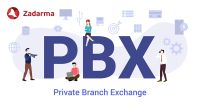A call centre, is a centralised location from which businesses manage all customer interactions and communications across various channels. The primary purpose of a call centre is to offer customers efficient and effective technical support, customer services and sales assistance. A call centre can often be the face of your company, handling inbound and outbound calls from current and potential customers. For many prospective clients and customers, the call centre is where they first experience and interact with your business. The following article highlights some simple steps and tools to consider when setting up an efficient, metric-driven call centre solution.
How to select a VoIP provider for your call centre
The starting point is set up with a trusted VoIP provider. Ideally, we advise selecting a cloud VoIP solution to offer greater mobility and flexibility, with the option of an onsite and remote call centre solution. You then will need to select your VoIP provider to access and leverage their cloud VoIP phone system to ensure your team stays connected and business operations keep moving. Cloud-based architecture provides minimal hardware overheads. This is the biggest benefit of a cloud-based call centre. With Voice Over Internet Protocol (VoIP), employees can make calls through a browser interface on their desktop or an app on their smartphone. Zadarma offers an easy-to-use Cloud PBX also known as a Private Branch Exchange. A private branch exchange is a telephone system within an enterprise that switches calls between users on local lines, while enabling all users to share a certain number of external phone lines. Zadarma’s PBX is popular with SMEs and larger organisations that require a call centre function.
How to integrate your phone solution with Customer Management Solutions
Zadarma’s PBX allows you to integrate your VoIP solution with your CRM. This enables any member of your on-site or remote customer service or sales team to provide a heightened personalised customer service experience to each inbound and outbound client call. There are numerous Customer Relationship Management (CRM) systems on the market. At Zadarma we offer our own fully integrated CRM too. This integrates with the cloud PBX and does not have a limit on concurrent users, allowing you to plan tasks and control their fulfilment. It is free and perfectly fits the budget model. Integrating PBX with CRM systems will let call centre operators connect to calls in one click and will automatically collect call analytical statistics and synchronise the contacts and call notes. You can build contact profiles to better understand your customers, which in turn will help support your customer servicing and sales development process.
Purchasing affordable virtual numbers
Now that you have your VoIP provider and a PBX in place, you will need to acquire virtual numbers to allow you to make and receive calls. Some VoIP providers allow you to choose a number from any country or city. If your business is nation-wide or global, we suggest connecting a toll-free number. This provides you with a free phone line for everyone in the country to call. Zadarma offers 800 numbers in 80 countries of the world. You can find more information on virtual numbers offered here. All virtual numbers are multichannel, meaning they have several incoming lines (so your operators can take calls simultaneously). As for outgoing channels (concurrent outbound calls from one number), their number depends on the price plan you choose. Most importantly, all incoming calls to virtual numbers (except the ones to toll-free numbers) accepted via the internet, are completely free.
Setting up your PBX and enabling voice menu (IVR)
Once your numbers are connected, you can now set up your PBX. Having a PBX will allow call centre call handlers to login in from anywhere, remotely, even when not on-site. Customers are able to navigate around your services very easily too, from wherever they are based. Customised voice menu settings will allow your callers to not waste time on explaining their call purpose and your customer services and sales managers, have more time to spend on building rapport with the caller.
Configuring your call centre call settings & enabling recordings
During working hours all calls will go straight to operators routed through your IVR. The rest of the time calls can either be forwarded to a personal mobile number (if these calls need immediate response), or to the answering machine. In this case, calls will be recorded, and operators can call back later. Call recordings provide you with insightful data. With call data you have more control operators’ call performance. Long term this can improve your customer care service. Some call centres will use call data as evidence and for dispute resolution.
Setting up your call centre for successful call handling
Once you have set up the call centre infrastructure, the management and processes need to be well considered to ensure you aim for a high level of call handling. Call performance measures how well each member of your customer call centre team is doing, on an individual basis. When you are on top of the call analytics around your team’s call performance you can also rate how your entire team is doing overall. It is essential to want your call handling employees to operate as productively and efficiently as possible. Consumers value businesses that are willing to go above and beyond and provide excellence in customer support & experience. When your customers feel valued they become loyal brand ambassadors for your company, which holds huge benefits. Call centre agents’ performance is directly proportional to the customer experience. With call centre metrics, you can identify your strengths and weaknesses and take stock of how your agents are faring.

Understanding Call Centre Metrics
Call centre metrics assist in gauging the overall effectiveness of customer service teams. Many aspects of call centres use metrics to measure performance, agent productivity, and other activities that lead to increased customer satisfaction. When setting up performance driven call centres, it is advisable to track a combination of metrics and KPIs rather than prioritising a single one. Here are some of the most important call centre metrics to consider:
Customer Satisfaction
Call Availability
First Call Resolution
Call Abandon Rate
Average Call Handling Rate
Call Quality Control
Customer satisfaction measures your customer’s experience with your organisation. Some businesses will use customer surveys to regularly monitor customer happiness. This metric will provide a strong indication of whether your call centre’s customer service offers are performing effectively. Some call centres will measure service level, which is the percentage of calls that are answered within a given period. Managers may set a service level target for teams to meet, for instance aiming for a high percentage of call pick ups to be achieved within less than 30 seconds.
Call service level shows you whether your business has enough resources to fulfil customer needs. It indicates if customers are being quickly connected to team members and getting their problems resolved in a timely manner. If your service level is lacking, then it may be time to adopt new customer service tools or hire more employees.
A call availability measure calculates the availability of your call centre team and defines how often your team are available to take calls and how long they take to resolve them. Availability measures how much agent time is spent simply waiting for contacts. This can be worked out as the total time spent waiting for contacts to arrive, divided by total agent time worked, excluding planned downtime such as breaks and training. This metric provides call centre management with a good indication of whether your call centre team is adhering to their daily tasks and call schedule or not. When call availability is low, managers can investigate call handling records and see if it was a busy day or review if team members were absent. This metric can be useful to understand peak calling periods and managers can adjust staffing volumes and working shifts based on this data.
First call resolution is the percentage of customer enquiries that are resolved during the first call between the customer and the call centre. This metric is extremely important because it plays a major role in reducing customer churn rate and loss of customers. The length of a call can often determine the prophecy of calls. For instance, calls that are resolved in an efficient manner and time frame might provide the training department with examples of best practice. If team members have a high first call resolution rate, then this is showing that they are solving problems quickly. Those agents who have high rates, can train up lower performing team members.
Call abandon rate is the percentage of calls that are dropped or lost by the customer. It’s important to resolve these types of issues quickly as dropped calls can negatively influence the customer experience.This percentage tells customer service teams how satisfied their customers are with wait times and call experiences. This can also help call centres determine if their calling systems are out of date.
Average Handling Rate is the duration of time that customers spend on each phone call with your call centre team. Speech analytics can help organisations to identify the reason behind customer’s dissatisfaction and to utilise the opportunity to make necessary changes for improving the repeat customer rate. While the standard for average call handling as a metric often varies by industry, most call centres will aim to reduce average handling rates as much as they can. Low averages means that call centre agents are more efficient and that you need fewer call centre staff at their desks.
This is a quality control metric and can be well monitored through specialists accessing call recordings. This sort of monitoring may be delivered by experts, who will re-listen to recorded calls to evaluate how accurate information is being delivered, and how effective call centre teams are at capturing customer data. Managers can utilise these insights to check in on whether team’s are following correct protocol and processes and ensure they are developing a consistent tone and message in line with business policies.
Popular VoIP tools to achieve excellent call centre standards
Call recording & call forwarding tools
can be used to look back at legacy calls where supervisors have had to barge or listen into calls. These features help control your call operators and help analyse the call performance. These recordings can be used for training purposes to improve call centre staff performance. Call forwarding is a feature that lets you direct incoming calls to any other telephone numbers or mobile devices. The forwarding pattern can be customised to your business needs to route calls intelligently to your voicemail, other call centre agents or to mobile devices. Zadarma offers both these tools as features within the standard pierce plan.Call monitoring, call barging & whisper mode tools
- Zadarma offers ‘Call Monitoring’, ‘Call Barging’ and ‘Whispering Modes’ as part of the suite of features offered within the cloud PBX (Private Branch Exchange). These are advanced telephony features which are proving popular for customer call centre teams, globally. These tools are allowing call handling centres and departments to maintain a high level of customer service even during peak call times. Call barging is a VoIP communication tool that enables additional call centre agents to drop into live calls to speak with both the inbound caller as well as the call agent. This is often used in call centres, when calls start to escalate. Senior managers can drop into calls when negative phrases are expressed and a customer care team needs a third party for support or intervention. Agents can ask a supervisor to drop into a call or senior managers can drop in unannounced. Whisper modes is a feature that allows a call centre manager to join an ongoing call between two other parties, however in this instance, only the supervisor can hear what is being said on the call with the customer. The way in which these tools are implemented will depend on individual business policies. Learn more about call coaching in our extensive article.Speech analytics and speech recognition
features can be used to look for call scenarios where supervisors may have had to barge or listen into a specific call. Speech analytics is the process of analysing recorded calls to gather customer information to improve communication and future interaction. The process is primarily used by customer contact centres to extract information buried in client interactions. Speech recognition is a tool that enables the recognition and translation of spoken language into text by computers with the main benefit of searchability. Both these VoIP tools assist with providing call data analysis and speech data that can unlock significant insights into understanding why a call escalated. Zadarma offers easy to use speech analytics and recognition features as part of the standard price plan.In conclusion - How to Set Your Call Centre Up For Success
You can set up your call centre for success through monitoring your call centre team’s call handling. Monitoring your employees call performance, allows you to track your call handling team’s strengths and weaknesses, so you can make adjustments and modifications to improve strategies for calls handling. Call metrics will help you identify the exact points in the customer journey where agents (or customers) are struggling the most. Furthermore, monitoring call performance will allow you to set clear and measurable goals (KPIs) for your call centre team and so you can evaluate your performance objectively based on those goals. By tracking how and what your employees are doing, you can collect accurate and measurable data. Plus, you can gain valuable insight into whether your customers are happy with your products or services, and the support your team is providing pre and post sale. This provides you with accurate and relevant call data and this allows for more informed and targeted training approaches.
If you are looking to achieve excellence and high efficiencies across your call centre, then leveraging a variety of VoIP empowered tools to support your call centre teams will ensure you meet your business objectives. With the right tools and metrics you will be able to continually nurture your call centre team members and provide them with tactics and probes to improve their call handling. With additional insights gained through speech recognition analytics and leveraging call barging and whisper modes, often this will improve team productivity and motivation, as they feel well supported. It is fundamentally important to track call centre operations effectively. Making your team aware of success metrics and setting Key Performance Indicators (KPIs) will ensure your team understands the service level the centre is aiming for. This will ensure managers have a clear understanding of how the centre is performing at all times. With a well monitored call centre solution, you can continually identify which strategic levers to pull to nurture call performance and improve efficiency, as and when needed.
If you would like to find out more information on how Zadarma can help assist your call centre solution, then please visit our website or contact our 24/7 support.
 Calls
Calls
 Phone numbers
Phone numbers
 eSIM for Internet
eSIM for Internet
 SMS
SMS
 Business Phone System
Business Phone System
 Speech analytics
Speech analytics
 Callback button
Callback button
 Video conferencing
Video conferencing
 Click to call button
Click to call button
 VoIP for Business
VoIP for Business
 Become a partner
Become a partner
 Integrations
Integrations
 For whom
For whom
 Setup guides
Setup guides
 FAQ
FAQ
 Online chat
Online chat
 Contact support
Contact support
 Blog
Blog













